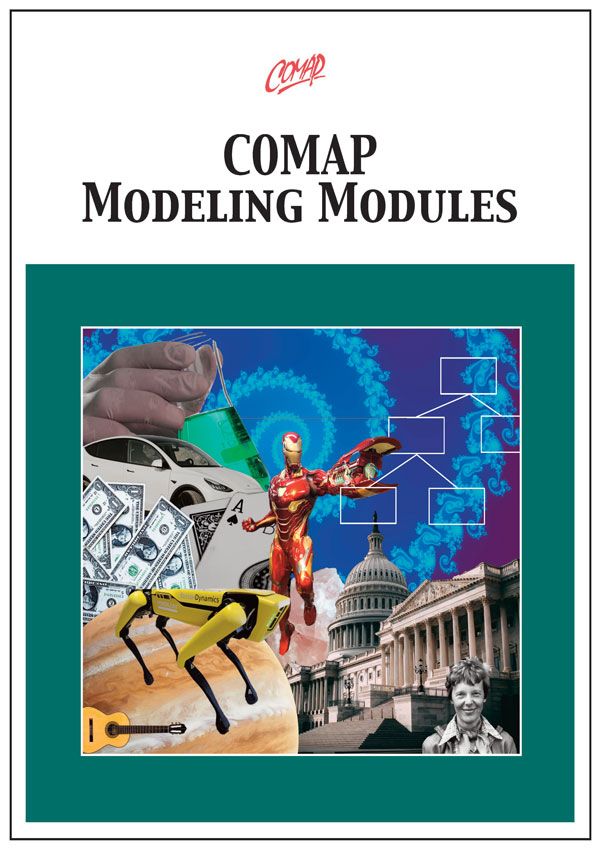Modeling Botpaths with Linear Functions (Modeling Module)
Author: Marsha Davis and Gary Froelich
COMAP presents a series of modules designed for teaching mathematics through the modeling of real-world phenomena. Most modules are suitable for use in high school classes, and some can be used in middle school, undergraduate courses, and in teacher education.
These modules are free to download and use in classrooms. Teachers have our permission to copy and distribute the student pages in their classes.
Each module in the series is built around several classroom activities. Each module includes student activity pages, teaching notes, and answers. Teaching notes and answers are in two-column format at the beginning of the module. Student activity pages are in full-page format at the end of the module.
Since technology plays a key role in mathematical modeling, most modules in this series offer opportunities to apply one or more forms of technology, such as graphing calculators and/or online graphing utilities, spreadsheets, and geometric utilities.
The context for this Modeling Module involves determining paths for robots (botpaths) so that they avoid colliding with obstacles as they pass between them. The module begins with a Preparation Reading. This reading introduces several "named" robots and specifies a modeling question related to robot paths (botpaths) between two obstacles. The reading is followed by a Preliminary Activity, which presents students with a diagram of two obstacles and a robot and asks them to draw a botpath that keeps the robot as far away from the obstacles as possible. This task develops concepts of midpoint and perpendicular bisector.
In Activity 1, coordinate systems are introduced as a way to precisely describe locations of obstacles and robot paths. For simplicity, the robot and the obstacles are assumed to be points, and all obstacles are assumed to be stationary. Students use linear functions to describe botpaths that satisfy the modeling criterion of maximizing the distance between two obstacles. The Pythagorean formula is used to determine the distance robots have traveled or how far robots are from an obstacle.
For Activity 2, the number of obstacles is increased from two to three or four. Students solve systems of linear equations to find where botpaths intersect. In keeping with the modeling criterion, the botpaths are determined so that the robot stays an equal distance from the two closest obstacles.
Activity 3 returns to some of the botpaths from Activity 2. However, this time the robots move along the botpaths and students must determine how far the robots have traveled and how long it has taken. When two robots are unleashed on the botpaths, the question becomes whether they will collide and if so, when and where.
Prerequisites
Students should be able to solve simple linear equations. They should have prior experience with the Pythagorean formula. Students should be able to find the average of two numbers. They should have previous experience with rectangular coordinates and graphing linear functions by hand and using technology (such as graphing calculators or Desmos). Given two points on a line, they should be able to find an equation describing the line. They should be able to use the formula Distance = Rate √ Time.
Materials Needed
Ruler (with centimeter, millimeter markings) for Preliminary Activity
Handout 1 (Preliminary Activity)
Handout 2 (Activity 1, Activity 2)
Handout 3 (Activity 2)
Handout 4 (Activity 3)
Graph paper (can be used in place of the handouts)
Access to graphing technology (such as graphing calculators, Desmos, or Geogebra)

Mathematics Topics:
Application Areas:
Prerequisites:
You must have one of our Free Memberships or a paid Full Membership to download this resource.
If you're already a member, login here.